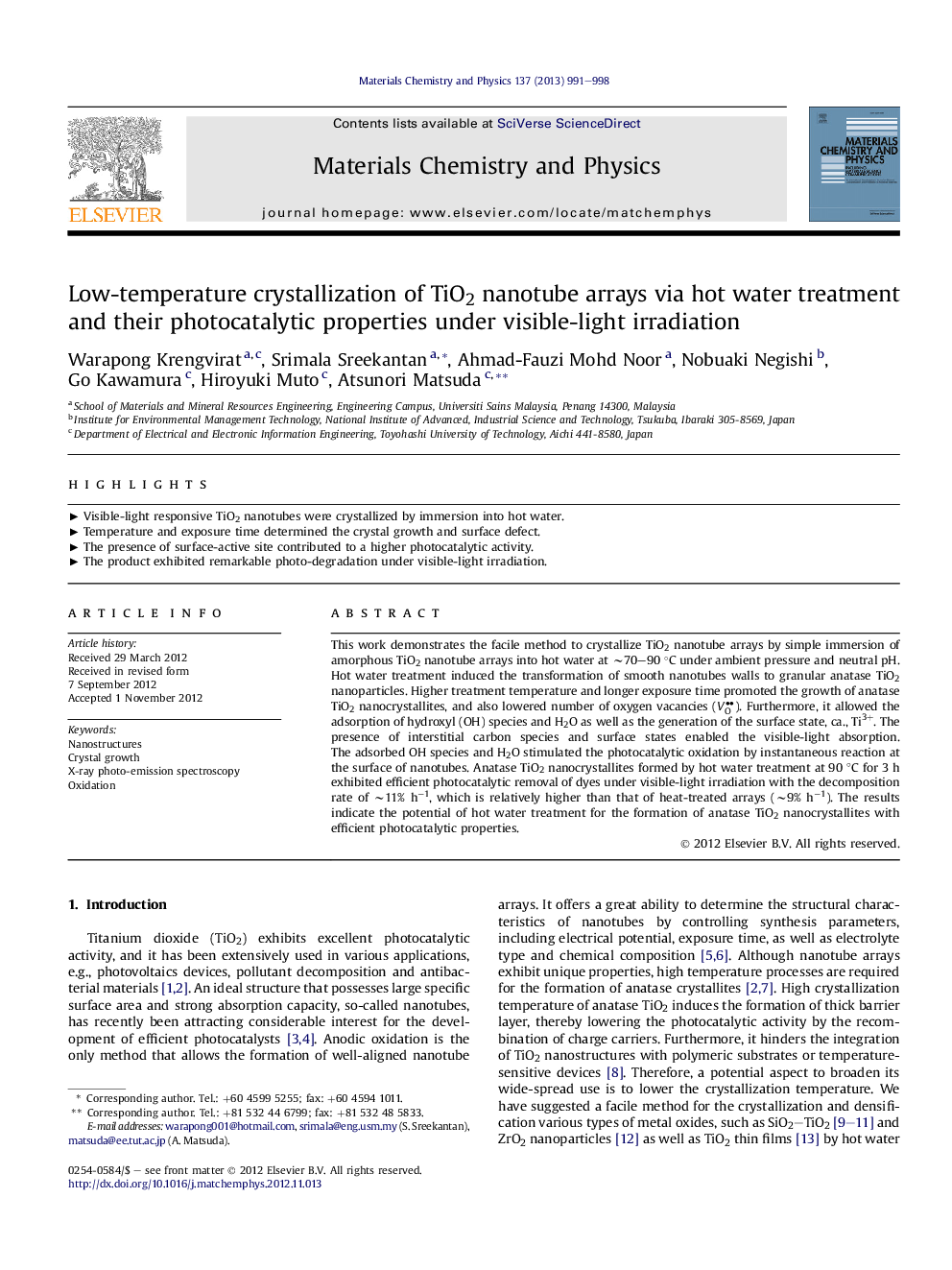| Article ID | Journal | Published Year | Pages | File Type |
|---|---|---|---|---|
| 1523203 | Materials Chemistry and Physics | 2013 | 8 Pages |
This work demonstrates the facile method to crystallize TiO2 nanotube arrays by simple immersion of amorphous TiO2 nanotube arrays into hot water at ∼70–90 °C under ambient pressure and neutral pH. Hot water treatment induced the transformation of smooth nanotubes walls to granular anatase TiO2 nanoparticles. Higher treatment temperature and longer exposure time promoted the growth of anatase TiO2 nanocrystallites, and also lowered number of oxygen vacancies (VO••). Furthermore, it allowed the adsorption of hydroxyl (OH) species and H2O as well as the generation of the surface state, ca., Ti3+. The presence of interstitial carbon species and surface states enabled the visible-light absorption. The adsorbed OH species and H2O stimulated the photocatalytic oxidation by instantaneous reaction at the surface of nanotubes. Anatase TiO2 nanocrystallites formed by hot water treatment at 90 °C for 3 h exhibited efficient photocatalytic removal of dyes under visible-light irradiation with the decomposition rate of ∼11% h−1, which is relatively higher than that of heat-treated arrays (∼9% h−1). The results indicate the potential of hot water treatment for the formation of anatase TiO2 nanocrystallites with efficient photocatalytic properties.
► Visible-light responsive TiO2 nanotubes were crystallized by immersion into hot water. ► Temperature and exposure time determined the crystal growth and surface defect. ► The presence of surface-active site contributed to a higher photocatalytic activity. ► The product exhibited remarkable photo-degradation under visible-light irradiation.
